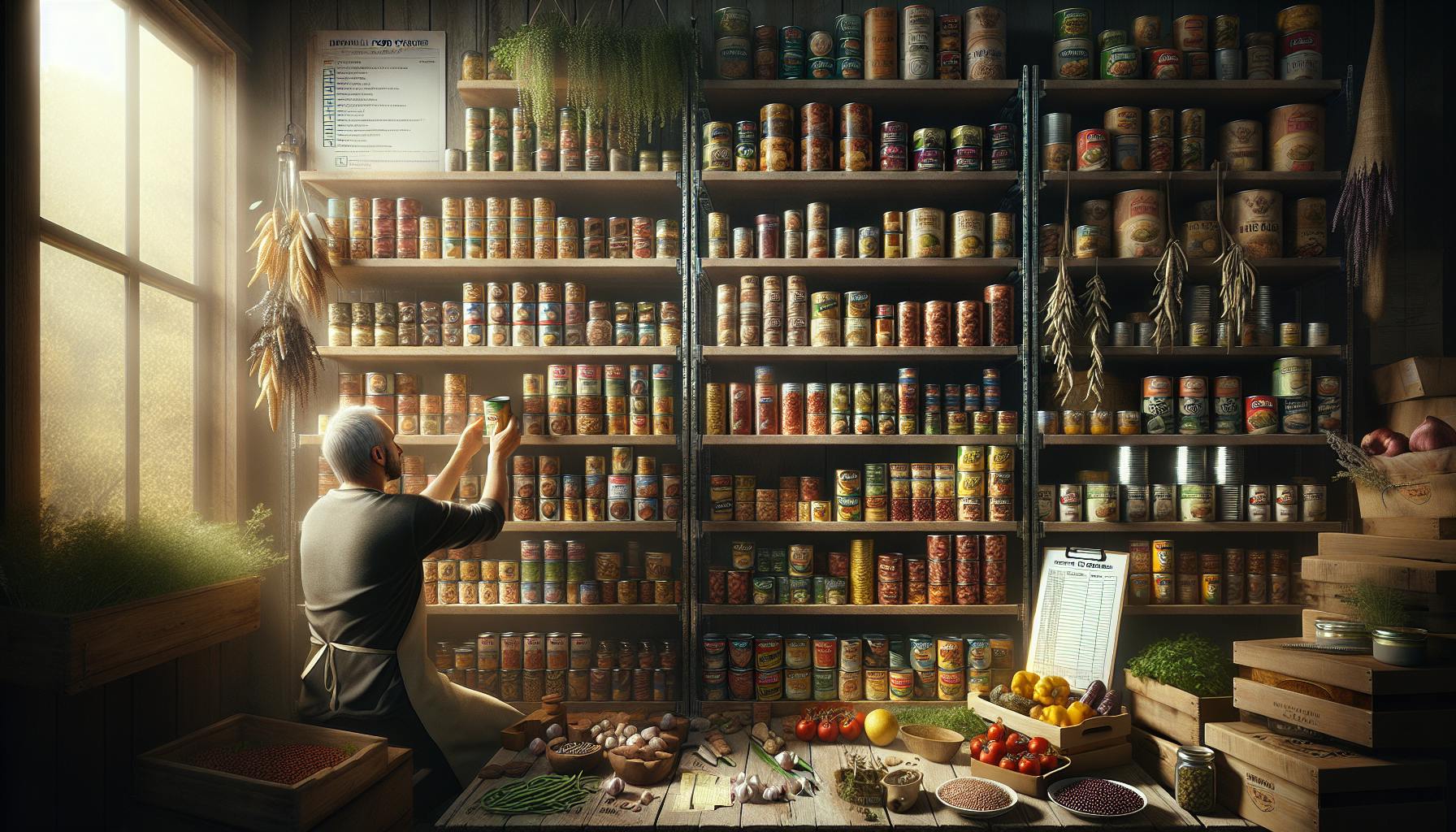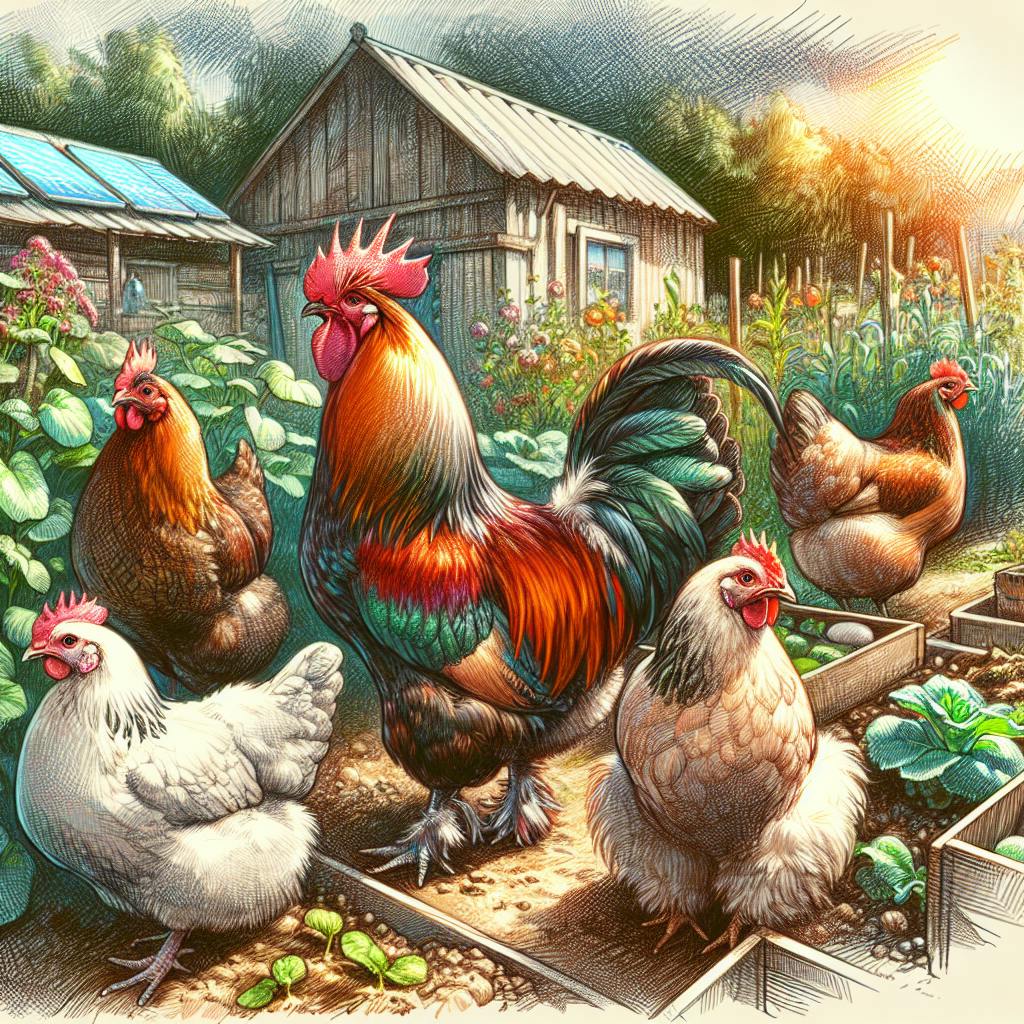Introduction: The Historical Significance of Staple Ingredients
The Great Depression of the 1930s was an incredibly challenging time for American families. With widespread poverty and food scarcity, being able to stretch meals and avoid any food waste was absolutely essential for survival. During this decade-long economic crisis, incomes plummeted and commodity prices remained high. To cope, Americans relied on hearty, nutritious pantry staples that could last a long time without refrigeration.
While our modern times are far more prosperous, these "great depression foods" still have much to offer today's preppers looking to build a robust emergency pantry. Stocking up on potatoes, carrots, canned sardines, oats and other hardy ingredients can sustain you and your loved ones if grocery stores close or supply chains are disrupted. Learning to preserve harvests through time-tested skills like canning, pickling and curing meats also provides invaluable self-reliance. Taking inspiration from the resourceful home cooks of the 1930s can greatly benefit your household's disaster preparedness.
In this article, we'll explore the historical context that made great depression foods essential for survival at the time. We'll share tips for stocking your own survival pantry with these ingredients today. And we'll cover old-fashioned skills like gardening, seed saving and canning to expand your self-sufficiency. Let's dive in and discover how the economical meals that sustained families through difficult times can prepare your household for the unpredictable road ahead.
The Challenges That Shaped Meals During the Great Depression
The Great Depression began in 1929 with the Wall Street stock market crash. Banks failed nationwide, wages were slashed, and unemployment skyrocketed to 25% as jobs disappeared. With no social safety nets, families had to make do with significantly reduced incomes. The demand for food relief increased dramatically, as many Americans were suddenly living on the edge of starvation.
Several factors shaped daily eating during this lean decade:
-
Victory gardens provided a vital source of produce when incomes limited grocery purchases. Canning and pickling preserved the bountiful harvests.
-
Economical homemade meals stretched ingredients as far as possible instead of buying pre-made food.
-
Hunting small game like squirrel and rabbit supplemented protein when other meats were unaffordable.
-
Baking bread with alternate grains like cornmeal and oatmeal stretched wheat flour supplies.
-
Saving and reusing cooking fats like lard or bacon grease was a necessity to avoid waste.
-
Hearty staples like beans, carrots, cabbage and potatoes provided cost-effective nutrition to keep bellies full.
In these harsh times, foods that lasted without refrigeration, provided ample calories and nutrients, and avoided any waste were central to survival.
Top Tips for Stocking Your Modern Emergency Pantry
While outright starvation is uncommon today, having a well-stocked pantry is still invaluable preparation for any prepper household. Here are some tips for filling your shelves with nutritious, budget-friendly depression-era staples:
-
Store potatoes, carrots, onions and winter squash in a cool, dark place for months of shelf life. Cabbage also keeps well.
-
Stock up on oats, rices, flours and meals like cornmeal or masa. Consider a grain mill for processing whole grains.
-
Keep canned sardines, tuna, salmon, baked beans, peaches and tomatoes on hand for protein and produce.
-
Learn how to can and pickle your own beans, carrots, salsa and sauerkraut to preserve abundant harvests.
-
Consider cured and smoked meats like jerky, salami and pemmican. Hard cheeses also deliver protein.
Emulating the self-sufficient homemakers of the '30s can supply a prepper's pantry for lean times ahead. Now let's explore the most essential ingredients.
Top Great Depression Foods to Prioritize
When building your emergency pantry, focus on ingredients that offer ample nutrition and calories for sustained energy. Of course, long shelf lives without refrigeration is also key. Here are some of the top great depression foods that nourished families through extended hardships:
Beans - A Prepper's Best Friend
Dried beans provide ample plant-based protein, fiber and nutrients. Varieties like pinto, black, kidney and navy beans can last up to 30 years when stored in airtight containers in a cool, dry place. Chickpeas, split peas and lentils are also shelf-stable. Buy them in bulk and cook in big batches for multiple meals. Serve delicious beans over rice, add them to soups and chilis or mash them into dips and spreads.
Shelf-Stable Milk and Canned Meats
Powdered and evaporated milk provide the nutrition of dairy without refrigeration. Canned options like salmon, sardines, tuna and spam were inexpensive sources of protein. For example, a can of salmon can be mixed with powdered milk and eggs then baked into salmon patties for a budget-friendly meal. Canned chicken, beef and pork were also readily available.
Root Vegetables - Potatoes, Carrots and Onions
Hearty root vegetables lasted through the winter without canning or pickling. Potatoes, sweet potatoes, carrots, onions and garlic were affordable sources of vitamins and minerals. They provided economical calories and nutrients. Potatoes were prepared mashed, fried, boiled, baked and more. Carrots added crunch to salads and flavor to soups. Onions offered seasoning for almost any dish.
Oats, Wheat Flour and Cornmeal
A sack of oats provided nourishment for the entire family through mornings full of oatmeal. Wheat flour and cornmeal allowed families to bake their own nutritious breads and stretch ingredients farther. Corn-based dishes like cornbread, grits, polenta and corn tortillas also sustained many through the depression era.
Prioritizing non-perishable, nourishing foods is central to crafting a survival pantry based on great depression staples. Let's look at some skills that expand self-sufficiency.
Building Self-Reliance With Homesteading Skills
In addition to stocking nutritious pantry staples, certain homesteading skills allowed families to become more self-sufficient during the depression era:
Growing a Prepper's Garden and Saving Seeds
Even a small garden can provide potatoes, carrots, beans and other produce that you can store and preserve. Choose heirloom varieties suited for seed saving. Use techniques like succession planting to maximize harvests from limited space. Save seeds each season to sustain your garden for years to come.
Canning Your Own Food
Preserve your garden bounty or foraged foods through water bath canning for long-term shelf stability. Safely process pickled vegetables, jams, sauces, soups and meats sealed in jars using proven techniques. For example, consider canning your own chicken soup, vegetable chili or spaghetti sauce. WeLovePrepping's online canning course teaches safe beginner methods.
Hunting Small Game and Fowl
With the right permits and safety training, hunting wild rabbit, squirrel and fowl provides survival protein if you learn proper field dressing and cooking techniques. Consider placing snares to passively catch rabbits. Game birds like quail, grouse and pheasant offer manageable targets for beginner hunters.
Learning traditional food preservation and hunting skills reduces reliance on modern supply chains when disaster strikes.
Key Takeaways for Your Survival Pantry
Taking inspiration from the economical home cooks of the Great Depression can greatly inform a prepper's pantry today. Focus on stocking up on nourishing, long-lasting foods like beans, canned salmon, oats and root vegetables. Expand your self-sufficiency through gardening, canning fresh produce and hunting skills. At WeLovePrepping, we aim to help every household achieve food security in an unpredictable future through emergency pantries and practical homesteading abilities. With the simple, hearty ingredients that sustained previous generations through crises, your family can flourish through any hard times ahead.


